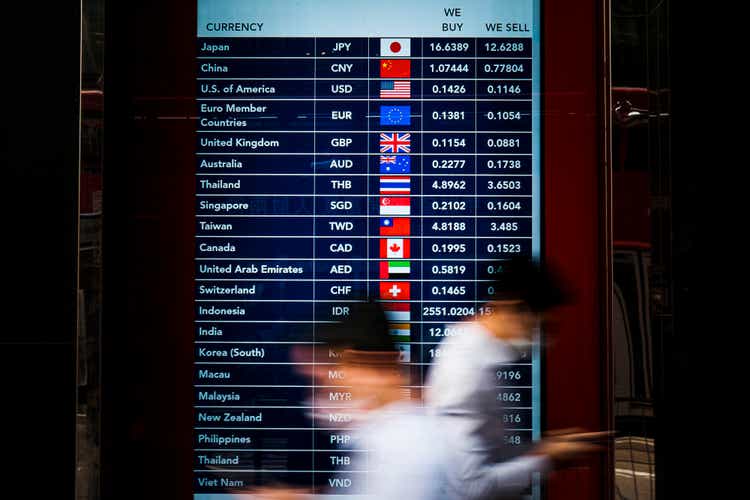
Tsuji
The U.S. Dollar Index (DXY) rose 1.65% last week, closing at $102.49 on Friday, after a surprisingly strong jobs report for September led traders to wipe out odds of the Federal Reserve delivering a large rate cut.
Traders on Friday wiped out odds of the Fed delivering a large rate cut of 50 bps in November. The probability of a half-point cut sank to 0%, according to the CME FedWatch tool. The odds were 32.1% on Thursday.
Reduced odds of a 50 bps rate cut were triggered by a strong jobs report. The Labor Department said U.S. nonfarm payrolls grew 254K in September, well beyond the estimated 132.5K. The unemployment rate also slipped to 4.1% vs. 4.2% expected.
The dollar index reached its highest level since August 16, as investors looked for a safe haven to invest in due to rising concerns regarding the escalating conflict in the Middle East.
Traders also repriced the dollar and yen currency pair on changing monetary policy expectations from BOJ and the Fed, pushing the greenback to jump to its seven-week high last week, also its best weekly percentage gain against the Japanese yen since 2009.
Last week’s currency movements: (Sep 30 to Oct 4)
Euro (EUR: USD) -1.46%, Euro slipped to $1.096, its lowest since August 15, as bets rose on the ECB cutting rates again in October due to easing inflationary pressures and economic slowdown.
Pound Sterling (GBP: USD) – 1.89%, Sterling fell to $1.311, its lowest since September 12, after BOE Governor, Andrew Bailey said it could become a “bit more aggressive” in cutting interest rates if inflation continues to cool.
Japanese Yen (USD:JPY) +3.04%, Yen dropped sharply against the U.S. dollar after dovish remarks from Japan’s newly elected Prime Minister Shigeru Ishiba. Japan’s central bank policymakers have pushed traders to scale back bets of another interest rate hike in the near term.
Chinese Yuan (CNY:USD) -1.27%, Yuan’s weakness last week was primarily driven by a rallying US dollar, buoyed by a stronger-than-expected US jobs report.
Swiss Franc (CHF:USD) -1.46%
Australian Dollar (AUD:USD) -1.76%
Canadian Dollar (CAD:USD) -0.38%
“Given a 25bp October ECB rate cut is now fully priced-in by the market and terminal policy rate pricing has also reached 1.50, we believe there is now very little room for a dovish ECB surprise,” the Bank of America said.
Despite the US dollar being in demand this week, UBS analysts warned against going long USD. “We continue to see broad dollar weakness over coming months and advise clients to use the current period of USD-strength to reduce exposure,” UBS said, adding, “With this view in mind, the DXY should ultimately fall below 100.”
During the week, the 10-year yield (US10Y) rose by 18 points to 3.99%, and the 2-year yield (US2Y) rose 33 points to 3.98%.
Looking ahead to this week:
A number of economic events are scheduled for this week, including the September CPI report, which the market eagerly awaits after the Fed’s recent rate cut announcement.
Other important economic data due to be released this week, are consumer credit on Monday, jobless claims on Thursday, consumer sentiment and wholesale inflation figures from the producer price index (PPI) report on Friday.
Markets also await earnings from major financial companies this week such as JPMorgan (JPM), BlackRock (BLK), and Wells Fargo (WFC) to get an idea about the financial sector’s performance this quarter.
